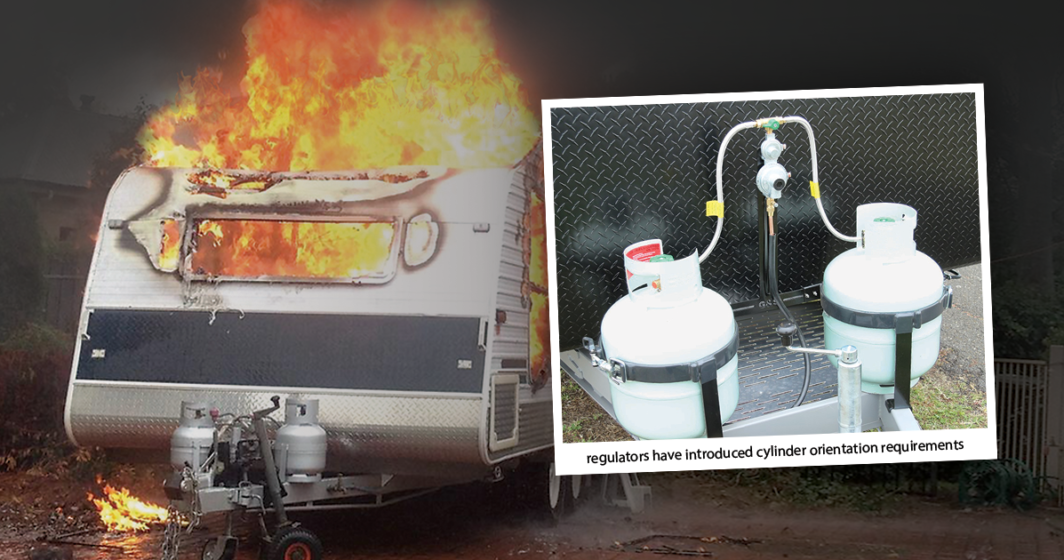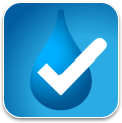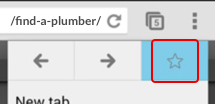Updates to the AS 5601.2.2020 gas standards, LP Gas installations in caravan and boats for non-propulsive purposes, are now in place. Master Plumbers’ technical expert Aaron Bridger takes us through the major changes.
Domestic Caravan
Regulators have introduced cylinder orientation requirements on caravan drawbars to allow for unobstructed relief of cylinder pressure. The cylinder should be orientated so the relief valve discharges away from the car and caravan, usually at a 45-degree angle from the front of the caravan. As the plumber you will not always be installing the gas cylinder but it is advisable to pass this information on to the client. Information can be found in Clause 3.1.4 and figure 3.1.4.
A prohibition of in-situ fill cylinders on caravans, boats however may have an in-situ fill cylinder installed if it can be demonstrated to the technical regulator that by its design or location the gas installation is safe. (Clauses 2.4.5 and 3.1.5.1).

Controlled Area
New Information and figures showing the controlled area and clearances required on a caravan drawbar from surrounding ignition sources vary dependant on the cylinder size. Figure 3.1.8(A) refers to cylinders nominally 10kg or less and figure 3.1.8(B) refers to cylinders nominally exceeding 10kg. A controlled area should include a label informing people that the cylinders should be isolated when not in use or in transit. Further information is located in clause 3.1.8.
Other major changes or additions in the new standard
- A new figure showing venting via a drain outlet from a cylinder compartment in a caravan, you must ensure the outlet of the drain is at least 1500mm from any source of ignition. (Figure 3.3.1(B) pg. 35) Note: A car or motorhome exhaust pipe is considered a source of ignition.
- Clarification of access to internal cylinder compartments in caravans and a reduction in maximum cylinder size (now no more than two 10kg). Further information is located in Clause 3.3.4.1
- Introduction of the requirement for shut off solenoid valves to be “encapsulated” type in LP Gas cylinder compartments, Clauses 3.3.1(G) and 3.3.3(I)
- The following points are some of the requirements for an electrical device to be considered “encapsulated” (the remaining can be found under clause 5.3):
- Be fully sealed in a flame-retardant box
- Provide a minimum IP55 protection
- Have no exposed terminals (be pre-fitted with flying leads or be terminated via a mating connection enclosure and cable gland.)
- Contain no moving electrical contacts.
- Allowance for hard-drawn copper to be used on houseboats on inland waterways on the lowpressure side of the gas installation (Clause 5.1.4.2)
- Limiting hose assembly pig tails to be only Class F. An excess flow valve must be immediately up stream of the hose assembly, the excess flow valve may be an integral part of the cylinder quick-connect device. Hose assembly must comply with AS/NZS 1869. (Clause 5.1.4.3)
- Prohibition on the use of press-fit connections (Viega, Kempress, B press, etc.). While press-fit was never an approved method for jointing of pipe, it has now been defined as prohibited in the new standards. (Clause 5.1.4.4(G))
- Increased requirements for new installations of distance between cookers and range hoods. You now require a minimum of 650mm clearance between the range hood and supporting surface of the cooking vessel. Along with a 650mm clearance to any other downward facing combustible surface this can be reduced if you can comply with clause 6.11.2 but in any case cannot be less than 450mm. Exiting installations, prior to the date of adoption of the new standards will be 600mm clearance between range hood and cooktop, provided the manufactures specifications do not require a greater clearance.
- If the 650mm clearance cannot be met a range hood constructed of non-combustible material may be installed at a lower clearance provided it meets the following:
- The range hood is installed at the clearance specified by the range hood manufactures installation instructions.
- The gas appliance manufactures installation instructions allow for the range hood to be installed at less than 650mm.
- It is installed at a minimum of 450mm clearance in all cases.
More information can be found at clause 6.11.1.
- Where a carbon monoxide detector is to be installed in a boat, that is impractical to use without covering the permanent ventilation the carbon monoxide detectors must now conform with EN 50291-1 and UL 2034 these are internationally recognized standards. (Clause 7.5)
- Additional requirements for toughened safety glass used as a cooker splash back - the glass is required to be marked “toughened safety glass” if it is not marked, documentation from the glass manufacturer is required to confirm it is toughened glass.
- Reconstituted stone or quartz surfaces contain polymer resins and may not meet the requirements set out in B.2. For further information see Appendix B
- Updated gas pipe sizing tables have changed the MJ/h allowance, this is slightly different to the existing tables, the new ones can be found in Appendix C
- Introduction of requirements for purging gas pipelines, as Appendix L is a large piece of information, it best to have a read through this one.
To finish off the noted changes, the normative references have been relocated to clause 1.2.
As you can see there has been quite a few changes to the standards and I believe they will be welcomed by most.
It’s important to adopt standard changes so we can continually improve safety for the public and reputation of our industry.
If you are in this field of work, it will be helpful to know what specific changes you are looking out for.
Master Plumbers’ technical advisor, Aaron Bridger is an award-winning plumber who has run his own business and is now taking on the privilege of supporting the broader industry. Among his awards are the Master Plumbers Andrew Letten Gold Medal Award, NA Smith Gas Award (Plumbing & Fire Industry awards) and first place in the 2015 apprentice skill competition. He also represented Australia in the 2015 & 2016 Community Plumbing Challenge Community Aid Project and the United Association Plumbing Competition. Aaron writes technical articles for the magazine and provides further information at plumber.com.au
Share this Article






